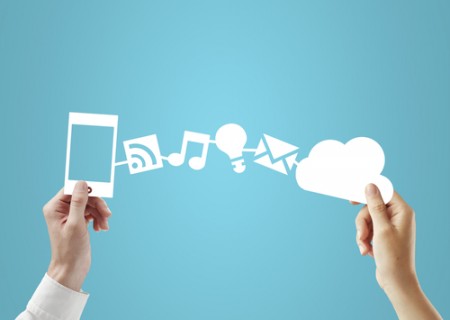May 5, 2015 – The impact of new technology can lead to altered behavior. Just ask those born after 1980, the Millennials. Technology has altered the way this generation thinks, works and interacts. It is not just digital literacy but social media and Internet familiarity that separates them from any previous generation. This Millennial generation and the ones born after are all about human-to-human interactions with the Internet and social media the facilitator for a global reach.
In today’s guest blog our contributor, Alex Clark-McGlenn, writes about the paradigm shift brought about by the confluence of technical innovation and a generational mindset. If you don’t believe this is true just get on a bus or subway car and watch what people do. In a recent IBM thinktank they describe the behavior aptly….”people tethered to their devices.” This is the means by which they see the world and this is the tool of choice for changing it.
Alex is studying for his Masters of Fine Arts in creative writing at the Northwest Institute of Literary Arts. This is his first contribution to 21st Century Tech blog. He has been published in eFiction Magazine, Inkwell at Evergreen, Slightly West Literary Magazine, and appeared in Smokebox Literary Magazine. Alex resides in Bellingham, Washington.
I hope you enjoy his contribution today and welcome your comments.
———-
Social media is all about connections. From keeping up with friends and family to your favorite celebrities and sports teams, social media keeps you connected with the world. But how can social media bring about social change? Well, it’s happened before and with continued technology advancements, new and different social media platforms are becoming available for people to connect in meaningful and important ways. Here are just a few examples.
1. FireChat and the Hong Kong Protests
FireChat is a new, internet-free chat app that allows users to communicate peer-to-peer without an internet connection. This app is available for Android and iPhones and bills itself as “off the grid,” because of its peer-to-peer functionality. So how does FireChat work without a cell signal or internet connection? With Bluetooth technology, of course. However, when using the “nearby” mode, you will only be able to chat with others close to you. And though this may sound limiting in this way, a message can spread through a crowd like wildfire.
In 2014 FireChat was instrumental in the organization of the Hong Kong protests where pro-democracy citizens staged peaceful protests in the city centers. Protest organizers encouraged protesters to download the app when they began to suspect the Chinese government would shut down cellular phone towers in order to try and limit the communication between organizers and the protesters. In just 24 hours, 100,000 people in China downloaded the app.
2. Multiplatform Revolutions
While social media is a great way of organizing and spreading the word when other means of communications are being cut off, certain social media platforms are also helpful for civilians. Sites like Twitter and Facebook haven’t just lead to the ousting of dangerous dictators in countries like Tunisia and Egypt, but can also inform civilians about their neighbors and people they know functioning in underground movements.
Back in 2012, during a torrid time in Egypt, protest organizers used Facebook to plan rallies, Twitter to communicate and coordinate with protesters, and then YouTube to inform the rest of the world about their actions. In a globalized world, public opinion is everything—so showing the world their efforts at making their country a better place helped protesters garner massive amounts of support.
3. Tips for Creating Social Change
While protesters in countries like China, Egypt, and even Yemen have used a variety of social media platforms to bring about social change, they were in situations that dictated the use of these platforms in organic fashion. While this kind of use can’t be replicated, there are things you can learn from how protesters have used social media in the past.
Craft a Clear Message: When creating real social change, your message must be clear and concise. However, even a great idea and clear message with concise wording might not gain traction immediately. This is okay. Don’t be deterred by a lack of results. It takes time for concepts to take root in a social group’s mind. But once there, and if it is a good one, people will follow.
Be Approachable: While a clear goal can give people faith in the fact that your cause will bring about worthwhile change, being approachable and open to suggestions is a must. Remember, platforms like Twitter and Facebook aren’t only for pushing your message. They are two-way conversation platforms. Listen to those who care about the issue you are addressing and incorporate their ideas.
Start the Conversation: Just because you’re using social media in order to bring about social change doesn’t mean you have to dumb down your message. Whether it is 140 characters, or a one-minute movie, be articulate and don’t skirt the big issues.


















